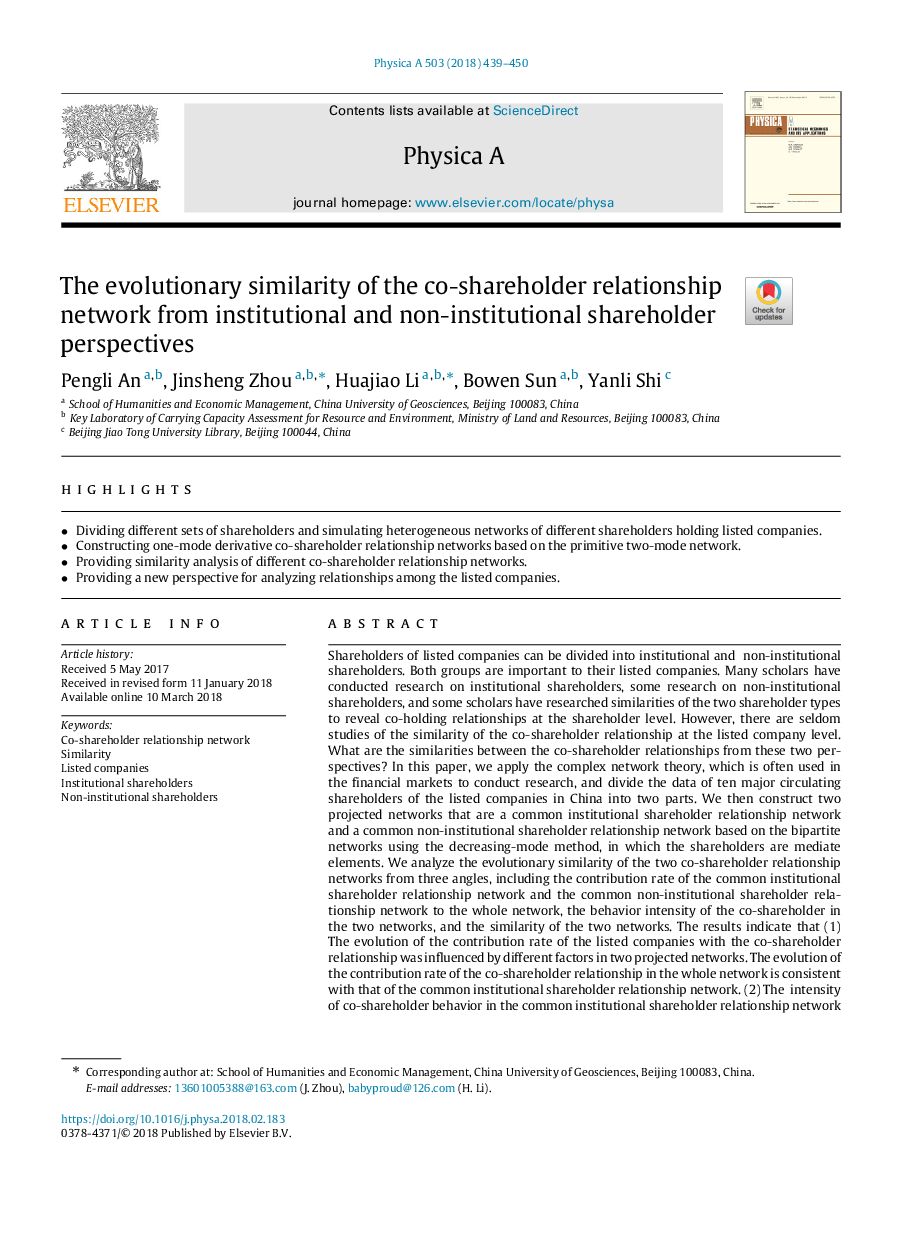| Article ID | Journal | Published Year | Pages | File Type |
|---|---|---|---|---|
| 7375310 | Physica A: Statistical Mechanics and its Applications | 2018 | 12 Pages |
Abstract
Shareholders of listed companies can be divided into institutional and non-institutional shareholders. Both groups are important to their listed companies. Many scholars have conducted research on institutional shareholders, some research on non-institutional shareholders, and some scholars have researched similarities of the two shareholder types to reveal co-holding relationships at the shareholder level. However, there are seldom studies of the similarity of the co-shareholder relationship at the listed company level. What are the similarities between the co-shareholder relationships from these two perspectives? In this paper, we apply the complex network theory, which is often used in the financial markets to conduct research, and divide the data of ten major circulating shareholders of the listed companies in China into two parts. We then construct two projected networks that are a common institutional shareholder relationship network and a common non-institutional shareholder relationship network based on the bipartite networks using the decreasing-mode method, in which the shareholders are mediate elements. We analyze the evolutionary similarity of the two co-shareholder relationship networks from three angles, including the contribution rate of the common institutional shareholder relationship network and the common non-institutional shareholder relationship network to the whole network, the behavior intensity of the co-shareholder in the two networks, and the similarity of the two networks. The results indicate that (1) The evolution of the contribution rate of the listed companies with the co-shareholder relationship was influenced by different factors in two projected networks. The evolution of the contribution rate of the co-shareholder relationship in the whole network is consistent with that of the common institutional shareholder relationship network. (2) The intensity of co-shareholder behavior in the common institutional shareholder relationship network is stronger than that in the common non-institutional shareholder relationship network, and the trend in the whole network is the same as the former. (3) The similarity of the co-shareholder networks is consistent with the change of the co-shareholder relationship and is influenced by the stock market and the difference in the number of co-shareholder relationships. In this paper, we analyze the evolutionary similarity of the co-shareholder relationship between the common institutional shareholder relationship network and the common non-institutional shareholder relationship network and the influence factor of the two networks. This provides a new perspective for analyzing relationships among the listed companies.
Related Topics
Physical Sciences and Engineering
Mathematics
Mathematical Physics
Authors
Pengli An, Jinsheng Zhou, Huajiao Li, Bowen Sun, Yanli Shi,
